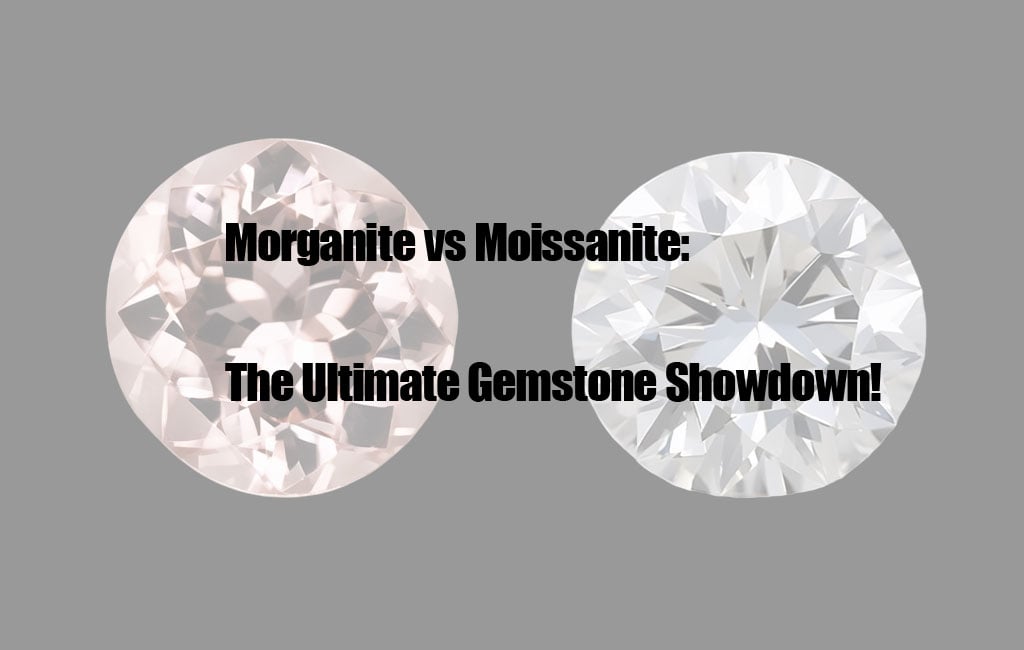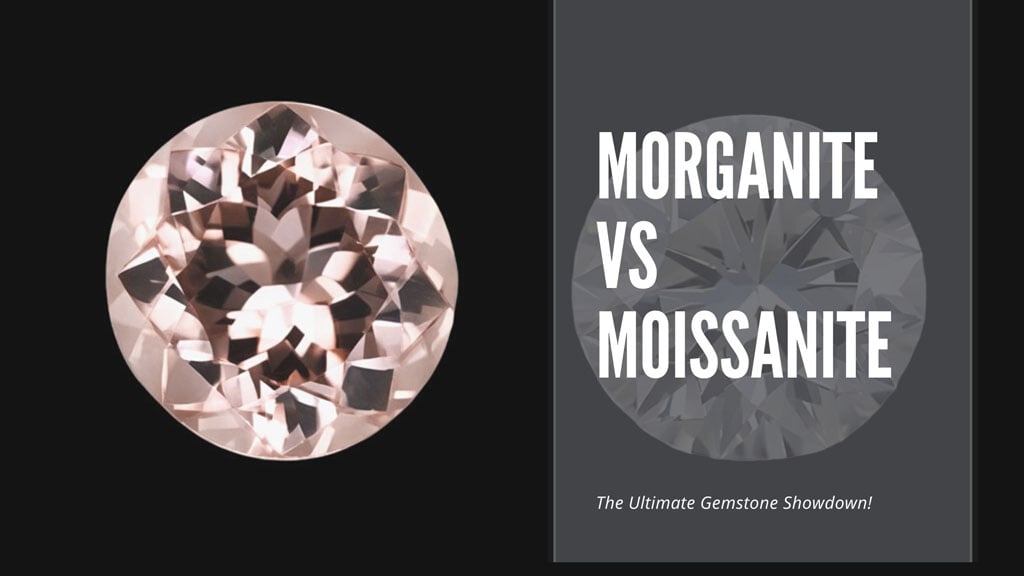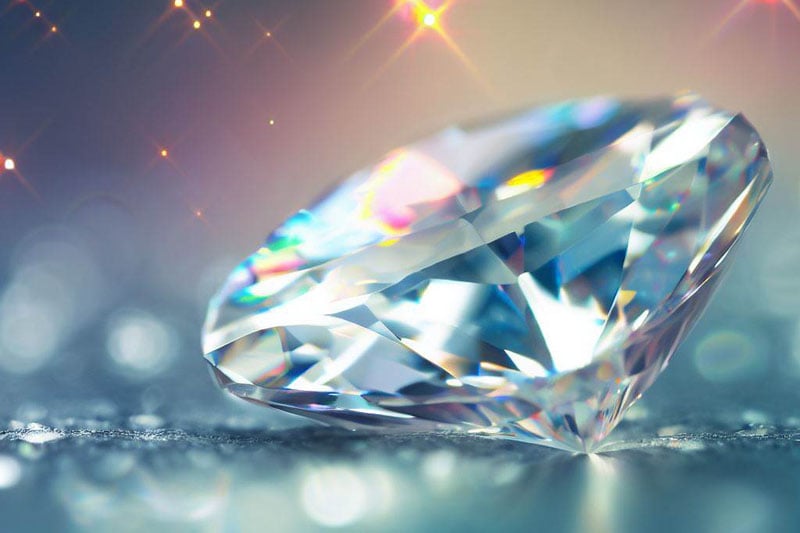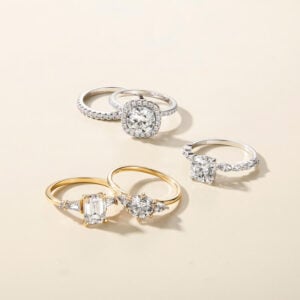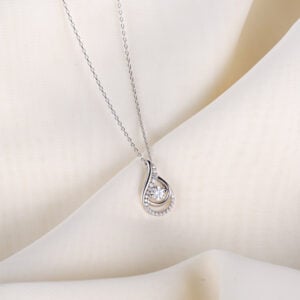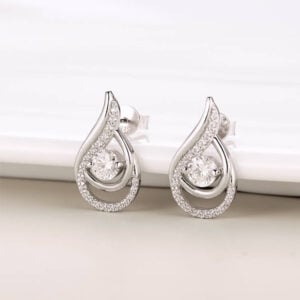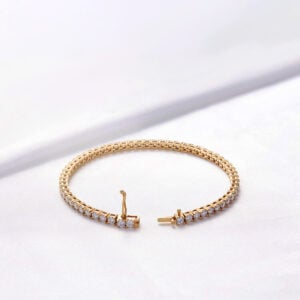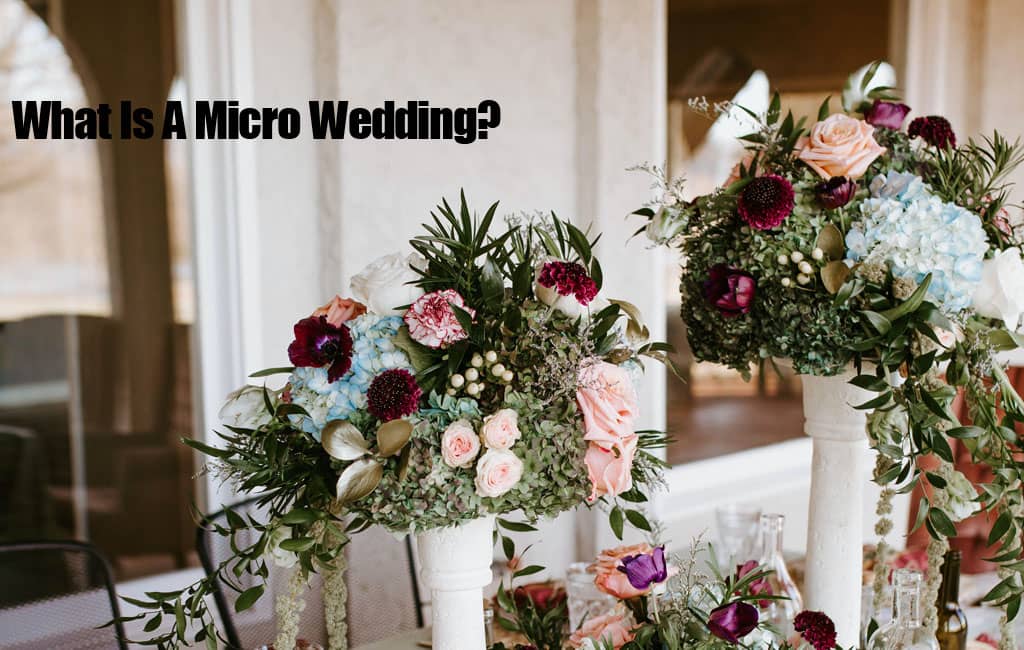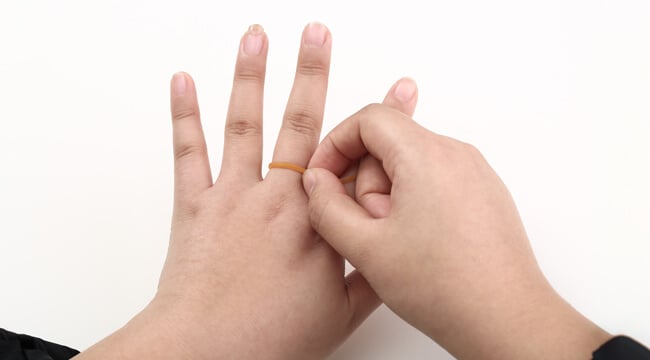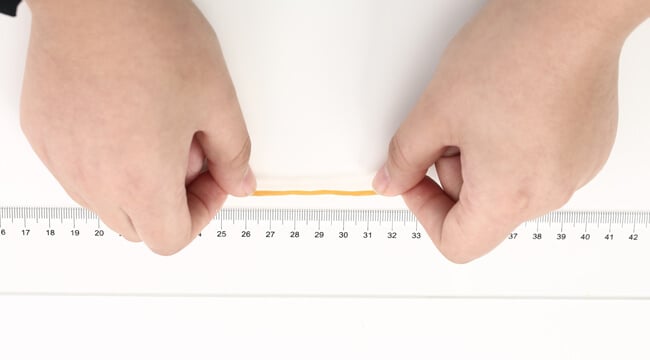Ever stood at a jewelry counter, gazing at two dazzling stones, and wondered, “What’s the difference between Morganite and Moissanite?” Both these gems have been adored for their beauty and unique characteristics, yet they cater to different tastes and budgets. Let’s dive in and unravel the mysteries surrounding these two gemstones.
Morganite vs Moissanite: A Direct Comparison
Origin & History
Morganite: One cannot talk about Morganite without mentioning the influential figure it was named after: J.P. Morgan. An esteemed financier and a passionate gem enthusiast, Morgan left an indelible mark on the world of gemstones. Morganite, with its captivating pink to orange-pink shades, was discovered in the exotic terrains of Madagascar in the early 20th century. This beryl gemstone quickly rose to prominence, thanks to its unique hue and the rich history associated with its name.
Moissanite: Drifting away from Earthly tales, Moissanite has a story that’s quite literally out of this world. Named in tribute to Dr. Henri Moissan, this gem was unearthed from a meteorite crater in the picturesque landscapes of Arizona. If you ever wanted to wear a piece of the cosmos, Moissanite is your answer. Termed “stardust”, this gem is believed to be a celestial gift, having its roots in outer space. If you’re intrigued by the difference between this celestial gem and other popular choices like diamond or cubic zirconia, consider diving into this comprehensive guide on Moissanite vs Diamond vs Cubic Zirconia.
Color and Appearance
Morganite: Morganite’s palette predominantly dances in the pink realm. Whether you’re envisioning the soft, dew-kissed petals of a budding rose or the richer, more vibrant shades of an evening sky, Morganite captures it all. Each piece, with its distinct shade, narrates tales of romance, nostalgia, and moments that tug at the heartstrings.
Now, if you’re someone who leans towards the unconventional, Morganite has a surprise for you. Now and then, in the vast array of pinks, you’ll discover gems bathed in hues of peach and salmon. These unique tones, reminiscent of a picturesque sunset or the first flush of ripe peaches, offer a refreshing divergence from the usual and are, quite honestly, a visual treat!
Moissanite: In its raw, untouched state, Moissanite wore a distinctive greenish-yellow robe. This color, one could argue, was a nod to its celestial origins, a bridge between the terrestrial and the vastness of space.
Fast-forward to today, and thanks to the miracles of advanced lab-growing methods, Moissanite’s wardrobe has expanded, and how! If you desire the flawless allure of a diamond without the hefty price tag, colorless Moissanite is your go-to. Its uncanny resemblance to the diamond is truly unparalleled. However, if you’re keen to understand the subtle distinctions between them, explore the detailed analysis of Moissanite vs Diamond Difference. But that’s not where the story ends.
Dive deeper, and you’ll find Moissanite gleaming in a myriad of shades, echoing the hues of many popular gemstones. Whether it’s the regal blue of a sapphire or the fiery red of a ruby, Moissanite’s got it covered.
Hardness and Durability
Morganite: Shifting our gaze to Morganite, while it doesn’t match the almost superhuman hardness of Moissanite, it’s no delicate flower either. With a commendable score of between 7.5 to 8 on the Mohs scale, Morganite exhibits a robustness that’s perfect for everyday wear. Sure, it demands a smidgen more care than Moissanite, but with that care, it promises to shine brightly by your side for years to come.
Moissanite: Let’s start with the near-invincible Moissanite. Clocking a remarkable 9.25 on the Mohs scale (a universal measure for gemstone hardness), Moissanite proudly stands as one of the hardest substances known to humankind. This means that if you’re someone who’s a tad bit clumsy or leads an active lifestyle, Moissanite has got your back. To dive deeper into how Moissanite holds up against lab-created diamonds in terms of resilience, don’t miss out on this enlightening piece about Moissanite vs Lab Diamond. It resists scratches like a champ, ensuring that it maintains its pristine shimmer year after year.
Brilliance and Fire
Morganite: Morganite, on the other hand, brings a different kind of magic to the table. While it might not match the explosive brilliance of Moissanite, its charm lies in its subtlety. Morganite exudes a radiant luster, which, instead of being overpowering, offers a gentle, delicate glow. It’s like comparing the glow of a full moon to the twinkling of stars; both have their distinct beauty and audience.
Moissanite: Moissanite, often dubbed the “showstopper” in gem circles, is celebrated for its unparalleled brilliance and fire. Due to its unique refractive properties, Moissanite has this innate ability to catch even the faintest of lights, breaking it into a spectrum of colors. Whether you’re at a candlelit dinner or under the starry sky, you can trust Moissanite to add a touch of sparkle to the moment. Its fiery dance of colors is truly a sight to behold, making it a top choice for those who love their jewels to stand out.
Price Points and Affordability
Morganite: Offering an elegant charm at a more affordable range, morganite becomes an attractive option for those on a budget but unwilling to compromise on aesthetics.
Moissanite: With its diamond-esque characteristics, moissanite usually carries a heftier price tag compared to morganite. But here’s the silver lining: When weighed against genuine diamonds, moissanite emerges as a cost-effective alternative, allowing wearers to flaunt similar brilliance without burning a hole in their pocket.
Ethical Considerations
Morganite: The mining of morganite demands strict adherence to environmental and ethical standards. To source morganite responsibly, one must ensure they are investing in stones extracted sustainably, maintaining the balance of our precious ecosystems.
Moissanite: With an increasing shift towards sustainability and ethical consumption, moissanite’s lab-grown nature is a huge draw. Those inclined towards ethically sourced gemstones often lean towards moissanite, knowing they’re sporting a stone created without ecological harm.
Choosing Between Morganite and Moissanite
In conclusion, the decision between Morganite and Moissanite boils down to personal preference and priorities. If you’re drawn to a gentle, romantic hue, Morganite might be your best bet. However, if brilliance, fire, and durability are high on your list, Moissanite shines as the superior choice.
Both gemstones have carved unique niches in the jewelry market, with each offering a blend of beauty, value, and ethical appeal. No matter your choice, you’re bound to possess a gem that not only looks stunning but also resonates with your values.
FAQs
Which is more durable, Morganite or Moissanite?
Moissanite, with its higher Mohs rating, is more durable than Morganite.
Can Moissanite be differentiated from diamonds?
To the untrained eye, they may appear similar, but experts can distinguish them based on their brilliance and refractive properties.
Is Morganite good for daily wear?
Yes, due to its commendable durability, but it’s best to avoid rough handling.
Do moissanite and morganite look similar?
Not really. While both are clear stones, morganite has a pinkish hue, and moissanite is known for its exceptional sparkle.

